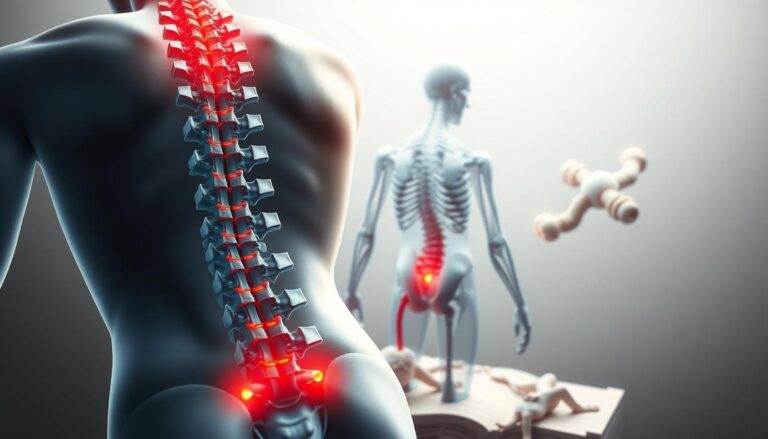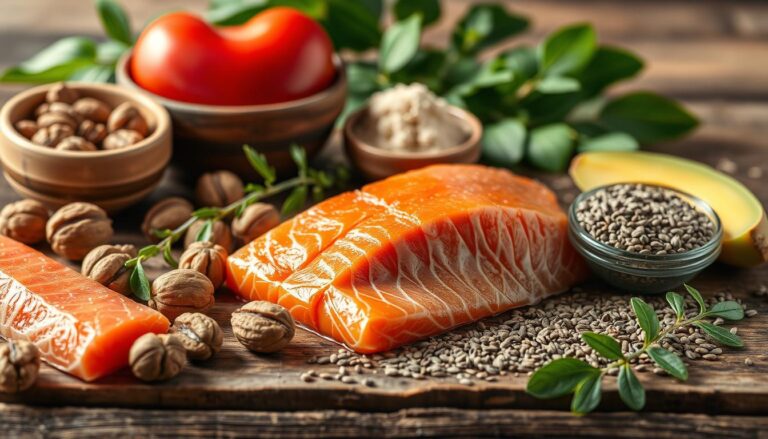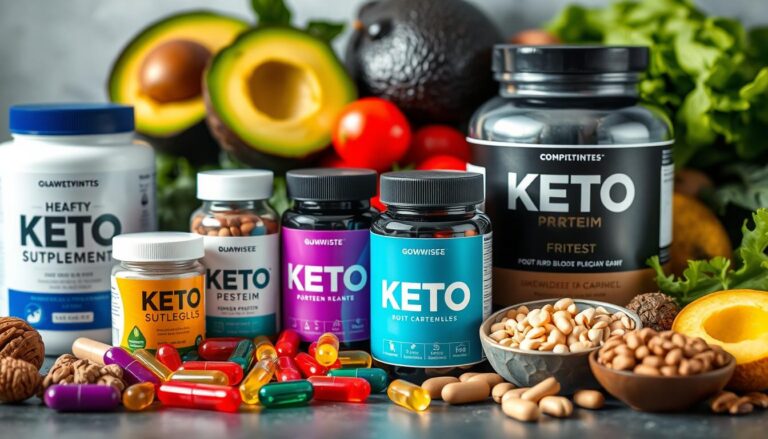Nitric Oxide: Could a tiny gas made in your blood vessels be the missing link in better circulation brain clarity and exercise gains?
This signaling molecule relaxes vessel walls to boost circulation and ease strain on the heart. Low levels tie to high blood pressure coronary artery disease, worse vision mood issues and age related cognitive decline.
This Ultimate Guide explains the role of this short-lived compound across blood brain, and muscles. You will learn what research supports and where evidence remains mixed.
Modern diets, less activity, and rising cardiometabolic disease raise the risk of suboptimal levels. The guide will cover mechanisms, signs of deficiency, top foods and lifestyle steps, exercise tips, and safe supplement options.
Think food first steady habits, and clinically grounded advice. By the end, you’ll know practical ways to support healthy blood vessels, possible benefits for pressure and performance, and when supplements may help.
Key Takeaways
- This signaling gas helps dilate blood vessels and improve circulation.
- Low levels link to higher risk of high blood pressure and heart disease.
- Diet, activity, and weight affect natural production and overall performance.
- Research shows clear benefits in some areas and mixed results in others.
- Food-first strategies are the foundation before considering supplements.
Why nitric oxide matters now a foundational overview for optimal health
Every breath step, and bite helps the body make a gas that tunes vessel tone and blood delivery.
This messenger signals smooth muscle to relax widening blood vessels so oxygen and nutrients reach organs and muscles. That widening keeps arteries flexible and eases workload on the heart.
It also supports endothelial function helping vessel linings stay responsive and resilient. The molecule takes part in immune signaling and nerve transmission linking circulation with overall body function.
Daily production depends on breathing movement, and the foods we eat. Diets rich in vegetables and greens provide nitrates that convert into this compound helping maintain healthy blood flow.
Low levels can impair flow, raise strain on the heart, and reduce exercise tolerance and recovery. Still, this pathway is foundational rather than a cure all it underpins many aspects of vascular and systemic function.
Supporting natural production through diet and activity is the safest first step.
- Role in circulation and nutrient delivery
- Support for endothelial resilience
- Influenced by foods, movement, and breathing
The science of nitric oxide how it supports blood flow blood pressure and overall body function
At a molecular level, this messenger helps vessels relax and adjusts circulation so tissues get what they need.
Endothelium protection and vessel relaxation
This small molecule activates pathways in vascular smooth muscle that cause relaxation and vasodilation. That widening lowers resistance and can help modulate blood pressure while improving blood flow.
Adequate levels protect the endothelial lining; too little leads to endothelial dysfunction and higher cardiovascular risk.
Oxygen and nutrient delivery
Better perfusion moves oxygen and nutrients to organs the brain, and working muscles. Improved delivery supports recovery stamina, and everyday energy.
Immune signaling, inflammation balance, and brain effects
This messenger also takes part in immune signaling and helps balance inflammation after stress or injury. By improving cerebral perfusion, it may support cognition and reduce symptom burden with aging.
Optimizing circulation can translate into clearer thinking, more energy, and better exercise recovery.
- Activates smooth muscle relaxation to widen vessels.
- Supports endothelial resilience and pressure regulation.
- Improves oxygen delivery to tissues and the heart.
Recognizing a nitric oxide deficiency signs risks and who is most affected
When the body makes less of this molecule, circulation suffers and everyday stamina drops.
Common clues of reduced production
Persistent fatigue and slow recovery after exercise often reflect poorer blood delivery to muscles.
Erectile dysfunction can also point to circulation trouble tied to lower availability of this compound.
Cardiometabolic markers such as high blood pressure and elevated glucose seen in diabetes frequently track with impaired endothelial function.
Potential links to cardiovascular and cognitive decline
Low production contributes to endothelial dysfunction and raises cardiovascular risk of disease.
Emerging research suggests reduced cerebral perfusion may relate to memory loss and age related cognitive decline.
- Slow wound healing and ongoing muscle soreness from poor tissue perfusion.
- Exercise intolerance and longer recovery times.
- Clusters of metabolic signs that suggest systemic vascular strain.
| Sign | Typical clue | Suggested next step |
|---|---|---|
| Fatigue poor recovery | Persistent tiredness after activity | Increase plant-rich foods and aerobic activity |
| Erectile dysfunction | Difficulty with erections | Discuss vascular evaluation with clinician |
| Cardiometabolic markers | High blood pressure, elevated glucose | Medical assessment and lifestyle plan |
If you notice several of these signs together, seek clinical evaluation to check levels and target management.
Food first strategies top dietary sources to boost nitric oxide naturally
What you eat each day supplies building blocks that support vessel function and blood flow.
Nitrate rich vegetables to prioritize
Prioritize vegetables that supply nitrates. Beets arugula, kale, spinach, and Swiss chard convert into compounds your body uses.

Fruits, nuts, seeds, and garlic
Include fruits like watermelon, oranges, grapefruit, and pomegranate. Add garlic and small portions of nuts and seeds such as almonds, walnuts, and sunflower seeds.
Animal sources and moderation
Red meat, poultry, and seafood serve as protein and amino acid sources that support pathways linked to nitric oxide. Use them in balance with plants.
Warnings and practical tips
- Limit processed meats preserved with nitrites and diets high in saturated fat that can reduce oxide availability.
- Rotate colorful greens across meals to keep nitrate intake steady.
- Try beet and arugula salads, sautéed leafy greens with garlic, or citrus-and-walnut toppings to boost adherence.
A consistent whole-food diet often gives enough support, reducing reliance on supplements.
Exercise and nitric oxide improving blood flow performance and recovery
Steady movement and strength work tune vascular responses, helping oxygen reach working muscles more efficiently.
How regular activity enhances production and endurance
Aerobic exercise raises enzyme activity that boosts molecule levels and improves vessel responsiveness. Long walks, cycling, and runs expand capillary networks and raise delivery to muscles.
Resistance training also helps. Lifting stresses muscle and signals pathways that increase local production. Together these adaptations translate to better endurance and perceived performance gains.
Emerging research and real time monitoring during workouts
Researchers at Harrington Discovery Institute are testing a wearable that measures levels in real time. This tech could tailor intensity and recovery, giving athletes data-driven results.
Pairing movement with nitrate rich foods sustains benefits and speeds recovery. Untrained people often see larger early improvements than elite athletes.
Regular exercise is one of the few proven ways to boost brain blood flow and help reduce cognitive decline risk.
- Mix steady-state cardio, intervals, and strength sessions weekly.
- Combine a plant-rich diet with exercise to sustain flow and recovery.
- Expect bigger early gains if you are new or moderately active.
| Activity | Primary effect | Typical result | Who benefits most |
|---|---|---|---|
| Aerobic walking, cycling | Raises systemic production | Improved endurance | Untrained/moderately active |
| Resistance training | Boosts local production in muscles | Better strength recovery | All training levels |
| Combined programs | Synergistic vascular adaptation | Optimized oxygen delivery | Recreational and competitive athletes |
| Wearable monitoring | Real-time feedback | Personalized training adjustments | Data-driven athletes |
Is nitric oxide essential for health? Evidence behind benefits and limitations
Changes in vessel signaling show promise to reduce pressure and improve tissue perfusion in some studies.
Blood pressure and arterial stiffness what research shows today
Animal studies often show reduced arterial stiffness and lower pressure with targeted interventions. Human trials give mixed results.
Overall: modest support exists for lowering blood pressure in select groups, but high-quality, long-term trials remain limited.
Erectile dysfunction sexual health and vascular function
Men with mild to moderate erectile dysfunction may see improved flow after interventions that boost vascular signaling.
These effects likely link to better vessel responsiveness rather than direct cure of underlying disease.
Exercise tolerance where benefits may appear and where evidence is mixed
Some human trials report better performance and recovery in untrained or moderately active people especially young males.
Elite athletes often show minimal gains. Results depend on baseline status, diet, and training.
Benefits tend to be modest and vary by population; interpret results in light of personal goals and clinical advice.

| Outcome | Typical evidence | Who benefits | Note |
|---|---|---|---|
| Blood pressure | Mixed human trials; some modest reductions | People with mild elevation | Depends on baseline diet and meds |
| Arterial stiffness | Animal + short human studies | Older adults in select trials | Longer studies needed |
| Erectile dysfunction | Several small trials show improved flow | Men with mild–moderate symptoms | Adjunct to medical care |
| Exercise performance | Benefits mainly in untrained subjects | New exercisers, recreational athletes | Elite athletes see limited effect |
- Population and design limits reduce generalizability.
- Effects depend on baseline vascular health, diet, and adherence.
- In pregnancy, prolonged amino acid strategies showed lower pressure in some trials; more research is needed.
Bottom line: Interventions may offer modest benefits as an adjunct to lifestyle. Discuss options with a clinician before starting any strategy.
Supplements for nitric oxide L-arginine L citrulline beetroot and nitrates
When plant rich meals are inconsistent, targeted supplements offer a practical way to support circulation and performance.
Choosing between amino acids and plant-based options
L-arginine supplies a direct substrate to the pathway. It can help raise short-term levels but may cause GI upset at high single doses.
L-citrulline converts to arginine and often raises arginine levels more effectively after oral dosing. Many users report steadier results.
Plant options like beetroot extract and nitrate supplements work through diet-derived pathways. They suit people who prefer whole-food–based approaches.
Pre workout dosing and timing
Typical pre workout guidance:
- L-arginine: 3–6 g about 30–60 minutes before training. Avoid single doses >10 g to reduce GI risk.
- L-citrulline: 6–8 g roughly 60 minutes pre-exercise; often yields better sustained arginine increases.
Daily arginine totals can reach 15–18 g split across meals if tolerated. Start low, check tolerance, then adjust based on results and product directions.
Quality purity and third-party testing
Choose supplements with third-party verification from NSF, USP, or ConsumerLab. Look for transparent labels that list exact ingredient amounts and forms.
Supplements should complement not replace a balanced diet and consistent training.
| Supplement | Common dose | Primary benefit | Notes |
|---|---|---|---|
| L-arginine | 3–6 g pre-workout; 15–18 g/day split | Direct substrate support | Watch GI upset; faster onset |
| L-citrulline | 6–8 g ~60 min pre-workout | Raises arginine levels effectively | Often better oral bioavailability |
| Beetroot / nitrates | Equivalent to 300–500 mg nitrate or standardized extract | Diet-derived pathway support | Good single-dose blood flow effects |
Always consult a clinician before starting supplements, especially if you take drugs that affect blood pressure or have heart, kidney, or liver conditions.
Safety first side effects interactions and who should avoid nitric oxide supplements
Before adding circulation-support supplements, review common adverse effects and personal risk factors with a clinician.
Possible adverse effects include gastrointestinal discomfort nausea, bloating, stomach pain, or diarrhea, headaches, and low pressure after dosing. Some people report increased bleeding risk and rare allergic reactions. Adjusting dose or taking products with food may reduce mild issues.

Medication interactions and clinical cautions
Supplements can interact with blood thinners and drugs used for erectile dysfunction raising bleeding or excessive hypotension risk. If you take antihypertensives, monitor blood pressure closely and consult your clinician before use.
Who should avoid or use caution
High risk groups include people with heart disease, recent myocardial infarction, cirrhosis, low baseline blood pressure, or specific enzyme deficiencies. Those with kidney or liver impairment need medical review, as do people with herpes or those on multiple cardiac medicines.
| Concern | Why it matters | Action |
|---|---|---|
| Recent heart attack | Clinical trial VINTAGE MI linked L-arginine to worse outcomes | Avoid unless directed by physician |
| Upcoming surgery | Higher bleeding and pressure variability | Stop supplements per surgical advice |
| Blood thinners / ED drugs | Interaction can increase bleeding or extreme low pressure | Consult clinician before combining |
Safety varies by individual; discuss supplements with your clinician to weigh potential benefits against risks.
Bottom line: Supplements can help some people, but they carry effects and interaction risks. A personalized plan and clinical oversight are essential before you start adjust, or stop any product.
Conclusion
Maintaining good vessel function supports energy, performance, and blood pressure balance. A food first plan centered on leafy greens, beets garlic nuts seeds, and other whole foods of high nitrate and antioxidant value often keeps levels steady without supplements.
Supplements such as L-arginine, L-citrulline, or beetroot extract may help selected goals like exercise or recovery. Discuss use with a clinician, especially if you have diabetes, kidney or liver concerns, or take interacting medications.
Prioritize consistent exercise, sleep, stress management, and a balanced diet. Track personal response and work with a provider to align choices with heart and blood pressure goals.





